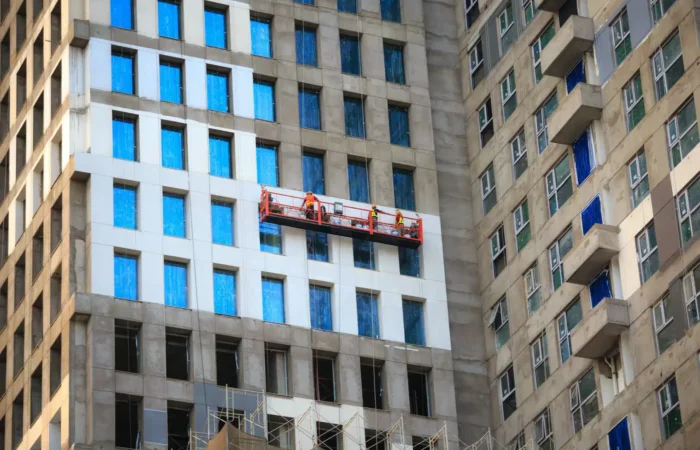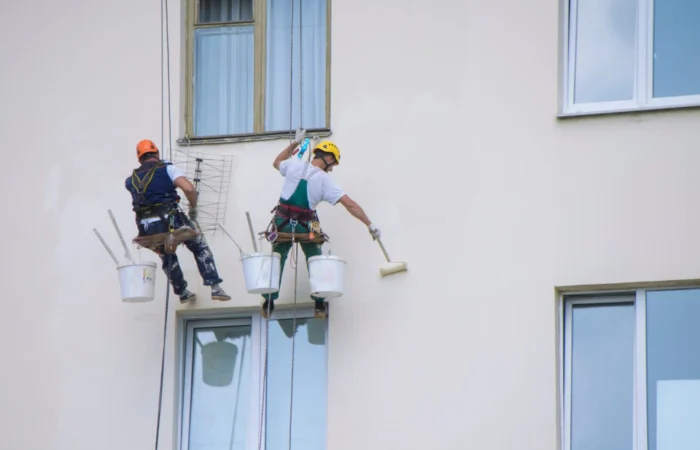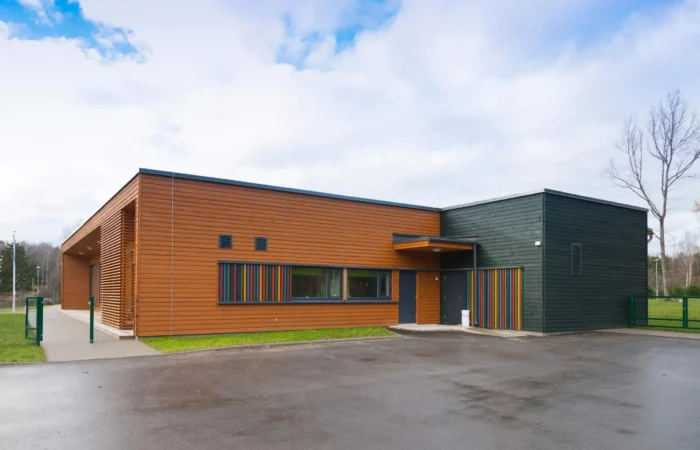
How Does Weather Affect The Timeline Of An Exterior Painting Project?
Weather plays a significant role in determining the timeline and success of exterior painting projects. Fluctuations in temperature, humidity, rain, and wind can all impact the application process, drying time, and overall quality of the finish.
Weather is a major factor when it comes to deciding the date, time and the success of the exterior painting projects. Modifications in temperature, humidity, rain and wind can all be causative agents of uneven application process, drying time and the strength of the finish. The guide explores the influence of weather on exterior painting and the strategies to deal with the challenge in the simplest way. The detailed knowledge of these factors would enable you to plan the painting projects in order to optimize the results and to prevent the unwanted delays thus sustaining the longevity of your building exterior finish.
The Impact of Weather on Paint
By carefully monitoring weather conditions and implementing appropriate precautions, such as scheduling painting during optimal weather windows and using specialized paints designed to withstand environmental challenges, you can ensure a successful exterior painting project that stands the test of time
Need Help?
*Consult with Our Experts for Weatherproofing Strategies!
- Temperature Fluctuations
- Humidity Levels
The degree of accomplishment of an exterior coating work is unique by the humidity. High humidity rates cause the drying process to be slowed, which makes the prospect of paint sagging or dropping to be higher. This elongated drying may be of a specific concern when it comes to building exterior painting, as it provides the surface with plenty of time to become dusty and to be affected by the weather changes. Lower humidity was being sought as it gives paint a more uniform rate of drying.
- Rain
- Wind
Despite the fact that it is often not taken into account, the wind also can negatively influence the process of exterior painting. This type of wind can pick up pollen, dust, and other particles that when they stick to the wet paint it ruins the perfect finish that you were shooting for. For the case of building painting projects that are high-rises, the wind is one of the factors that also cause spray paint to spread before it is even touched the surface, in return, this creates unevenness and wastes the paint.
- Sun Exposure
In What Ways Does Weather Affect the Timeline of an Exterior Painting Project
- Delayed Start Times
- Extended Drying Times
The humidity is a topical issue which can drag on the drying time between each coat of paints and so it is very important that it should be factored in during the timeline of an exterior painting project. Excessive moisture in the area blocks the paint from drying and hardening correctly; therefore, two or more coats of paint need to be applied with longer periods of time between each coat. The difficulties in this case can be especially greater for large-scale undertakings such as commercial exterior building painting where even the slightest delay in the project completion can lead to additional costs and complicated logistics.
- Scheduling Conflicts
- Quality Assurance Revisits
- Optimizing for Weather Windows
Protecting Your Fresh Paint from Adverse Weather Conditions
- Timing the Paint Application
- Using Weather- Resistant Paints
Invest in high-quality, weather-resistant paints specifically formulated to withstand the elements. These paints are designed to be more durable against rain, UV rays, and fluctuations in temperature, providing an added layer of protection for your building’s exterior. Selecting the right type of paint can make a substantial difference in the longevity and maintenance needs of the paint job.
- Implementing Protective Measures During Painting
- Ensuring Proper Surface Preparation
- Monitoring the Weather and Adjusting Plans Accordingly
The Ideal Weather Conditions for Exterior Painting
- Temperature
- Humidity
- Dry Weather
- Mild Wind Conditions
- Sunlight
As an example, if you live in an area that has different climates, your painting timings may anytime due to the different climates. As for the coastal regions, they may be prone to higher humidity or salt spray, while inland areas is expected to have more frequent extreme temperature variations. For big exterior building painting requirements, the importance of planning becomes even more significant to minimize the problem created and ensure the project’s success.
Frequently Asked Questions

Trustindex verifies that the original source of the review is Google. On behalf of Peter A. - Committee Member of Birkenhead Quays I have been in the building industry industry for over 50 years, I have never seen a building of this size being completed two months ahead of schedule and under budget. Thanks to Vincent and Yusif they have been amazing. CPR team are true professionals with qualified trade people. Out of 148 apartments not 1 complaint. I would highly recommend them if you want friendly and hassle free servers.Trustindex verifies that the original source of the review is Google. I am the Building Manager for Birkenhead Quays in Drummoyne NSW. I am absolutely thrilled to share my incredible experience with CPR! Every aspect of their work, from the initial consultation to the final brushstroke, exuded a sense of excellence. The attention to detail they displayed was remarkable; it was evident that they took great pride in delivering flawless results. What truly sets CPR apart is their commitment to understanding and meeting their clients' needs. They took the time to listen to our vision and preferences, incorporating them seamlessly into their approach. The final result was a masterpiece that exceeded all our expectations. Furthermore, their professionalism and punctuality were second to none. Deadlines were not only met but surpassed, showcasing their dedication to providing a seamless and stress-free experience. Their team worked efficiently and neatly, ensuring that our building was left even more immaculate than when they arrived. CPR is a shining beacon of excellence. If you're looking for a painting company that delivers unwavering professionalism, and a truly remarkable experience, look no further. I am beyond grateful for their exceptional work and can't recommend them highly enough. A big thank you to Vicente, Hussain, Namat, Yusif, Dinesh and Mark on this project. Sincerely, Danyelli Rosa - Birkenhead QuaysTrustindex verifies that the original source of the review is Google. High quality work, customer-focused service, impressive outcomes. Project Manager Vicente Barba and his team were professional and responsive.Trustindex verifies that the original source of the review is Google. This company is outstanding!! So professional, such great communication, such clean, tidy and brilliant work painting our very high and large building with next to no disruption, hassle or inconvenience. I highly recommend this company. FranTrustindex verifies that the original source of the review is Google. We live by the sea and CPR completed painting of the exterior of our Strata Building in 2015. Seven (7) years later, it still looks great.Trustindex verifies that the original source of the review is Google. Cannot fault this company. They were professional and polite and keep the occupants well informed as to their activities! Our building looks like new again. The employees are friendly and helpful.Trustindex verifies that the original source of the review is Google. We have just recently had our building facade painted by the team from CPR. The building was built in 1969 and is 8 stories in height - the abseiling worked perfectly for the job. Over 30 years I have been involved in many major projects and the guys from CPR were delightful to work with. The team was led by Vicente and nothing was a problem - the guys were always there to help. The response from other residents in the building is the same - everyone thought all the guys on the job were very friendly, punctual, polite and super obliging. The communications throughout the job was always open with weekly site meetings. We have had positive comments from many of our neighbours about the fantastic result and I would not hesitate to recommend CPR. KatrinaTrustindex verifies that the original source of the review is Google. Our experience with Facade upgrade specialists was excellent. The attention to detail wonderful. The entire performance was faultless. The team worked diligently with care and precision as they quietly abseiled down our building. It was a long job over two buildings but it was noteworthy that Abdul and his team worked long hours here. There were no raised voices and than goodness no loud radios. For fifteen months, partly due to Covid, our building seemed to be under siege. Scaffolding had been required by the noisy team who needed to remove then our combustible cladding. Having your Facade team was sheer delight after what had previously been a rude and noisy ordeal. Bravo to you all. Thanks for your good work.Trustindex verifies that the original source of the review is Google. This company is so professional and passionate about their work, as well as being obliging and helpful. A pleasure to have this team painting our building. With thanks.




